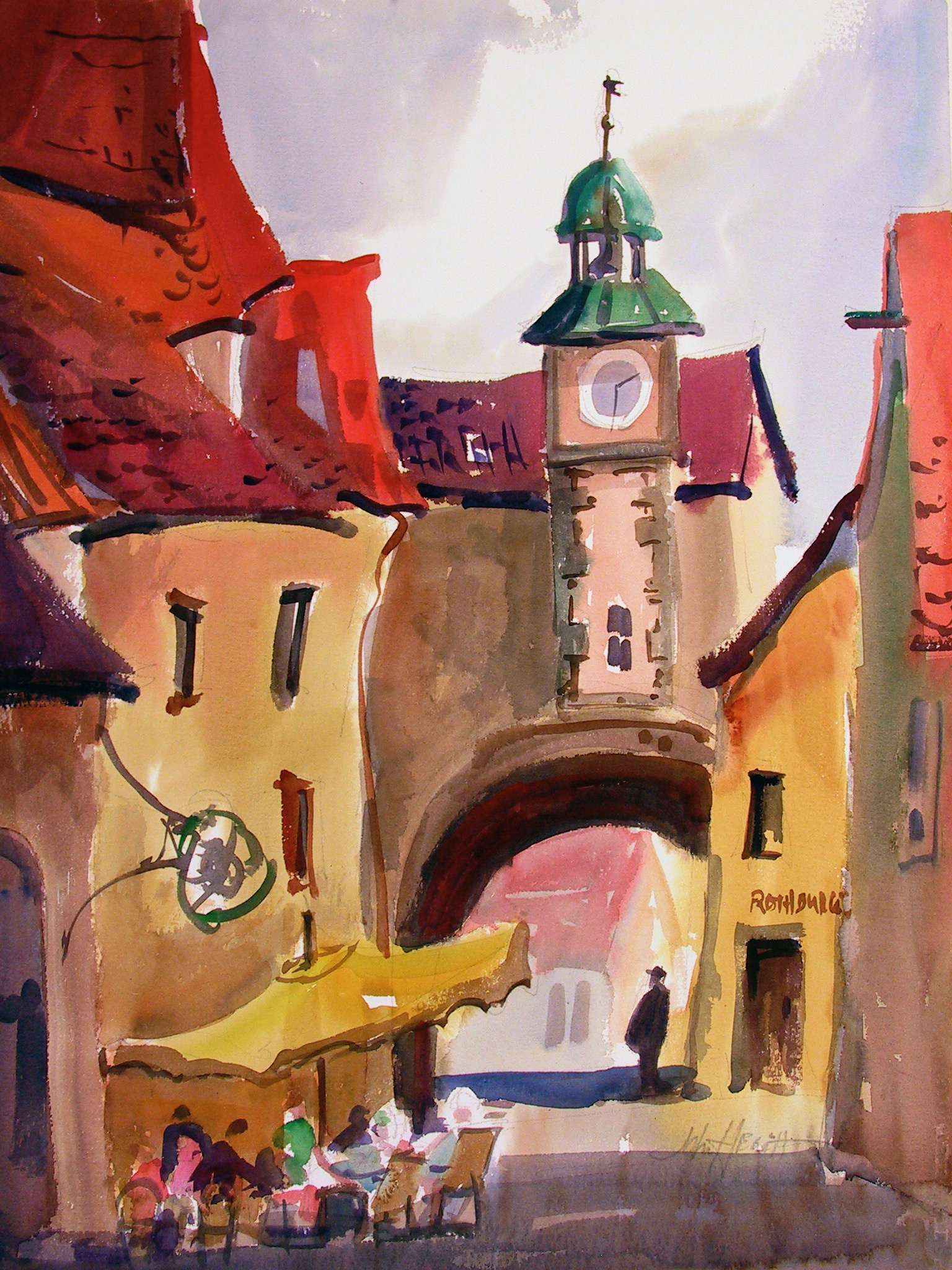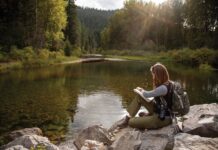“I prefer interpretation to realism,” says John Hewitt. “I don’t try to compete with photography or make an exact copy of a scene complete with every blade of grass. Instead, I arrange and design the scene to make a good painting. I try to capture the underlying feeling of a subject — the thing about it that cannot be explained in words. In those sublime instances when I strike a common chord with the viewer, drawing them into my view of the scene, I know I’ve created a successful painting.

“As a former emergency room doctor, my approach to life in general has been to respond quickly and to remain flexible in my responses. Often I’ve had to come up with makeshift solutions to problems. Perhaps that’s why I like the spontaneity that is a primary aspect of watercolor painting.

“When I paint en plein air, I find that starting with a light sketch outline then wetting the paper sets me up for painting with speed and allows me to capture spontaneous effects in the landscape, which is important as the light changes rapidly. On damp paper, I can easily cover large areas of the surface quickly; large, soft brushes help, too. I add a second wash (glaze) in areas as needed, finishing with a drier brush to add any necessary details.”

Plein Air Painting Tip
“One thing to remember: Sunlight will wash out your painting, so you may find that when you take it indoors it will be way too dark. For that reason, it’s a good idea to paint in the shade. At the same time, watercolor dries lighter, so paint a bit darker than you want the finished painting to be.”
For more inspiring stories like this one, sign up for our free weekly e-newsletter.








ENJOY THE ARTICLES. I TEACH WATERCOLOR AND AM PASSIONATE ABOUT THE MEDIUM